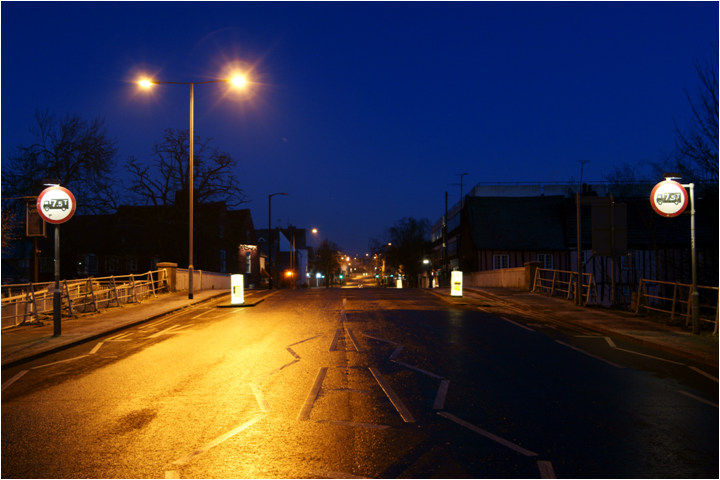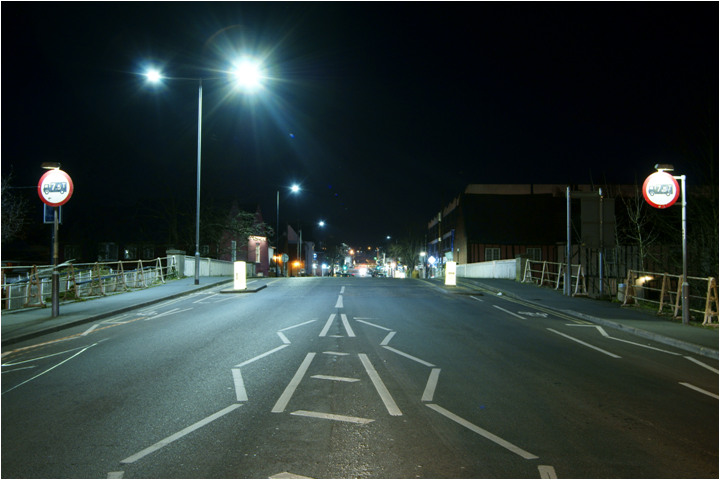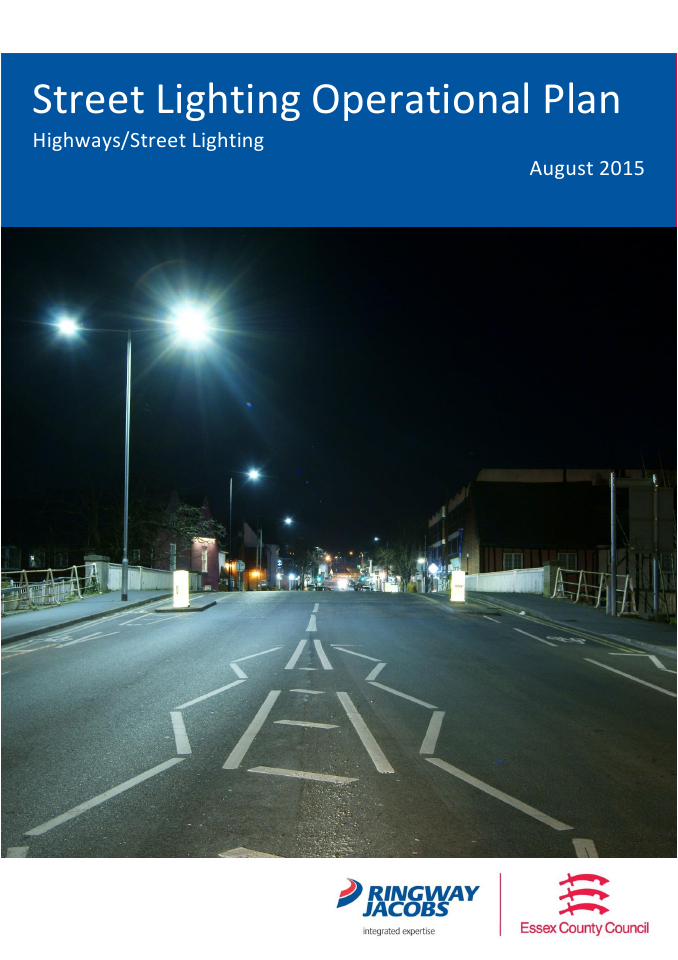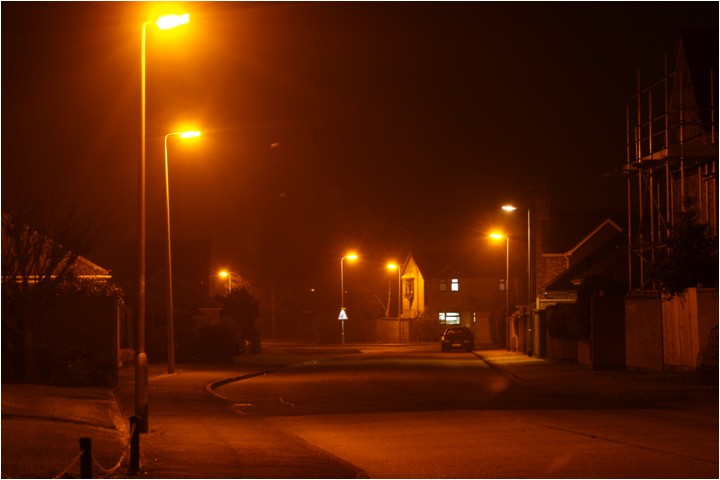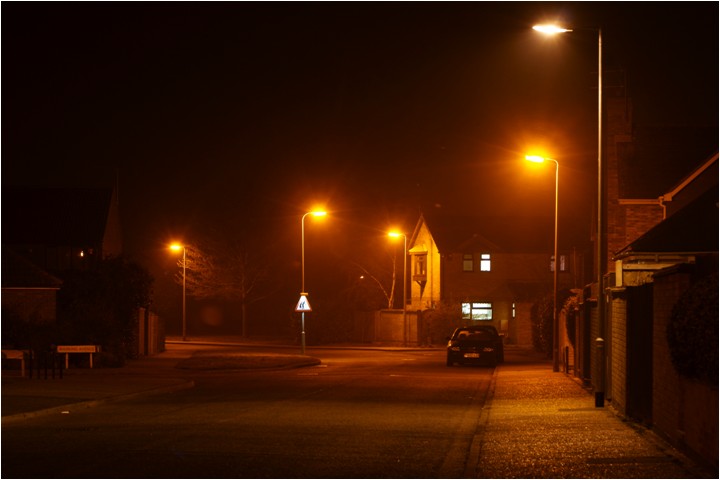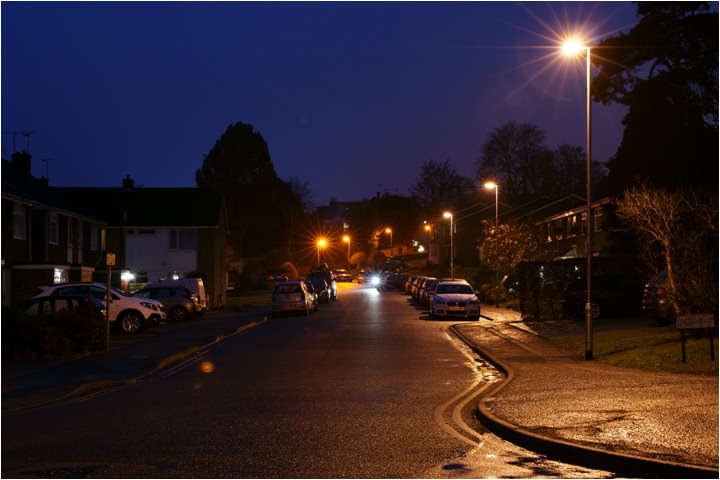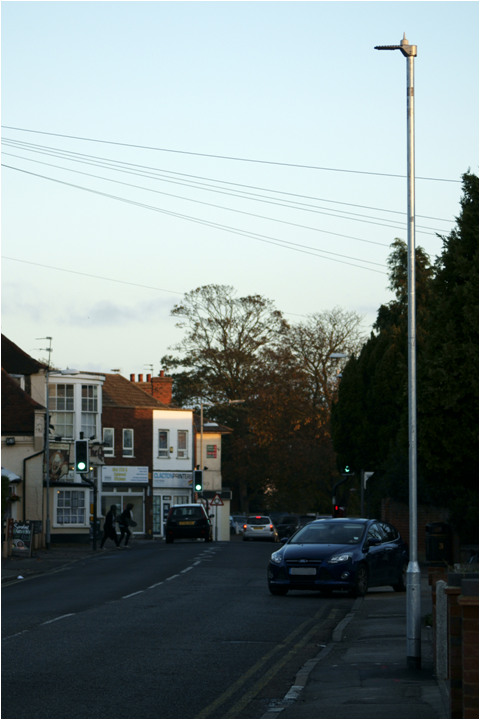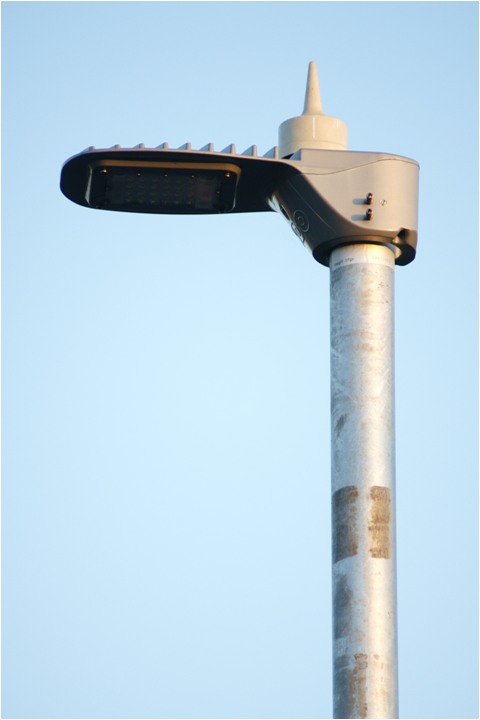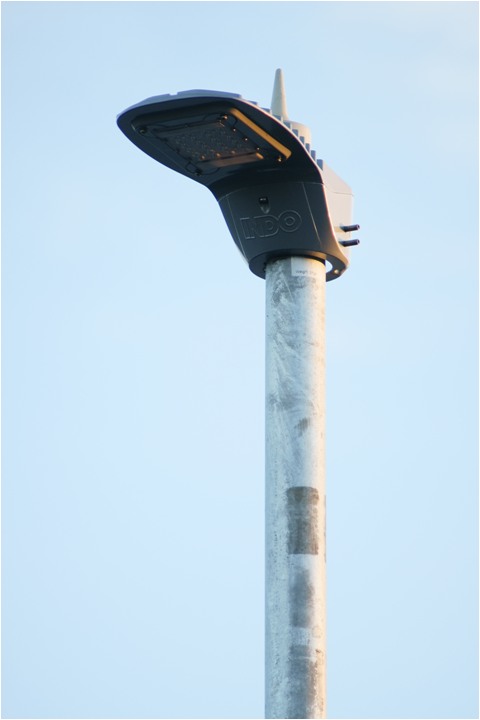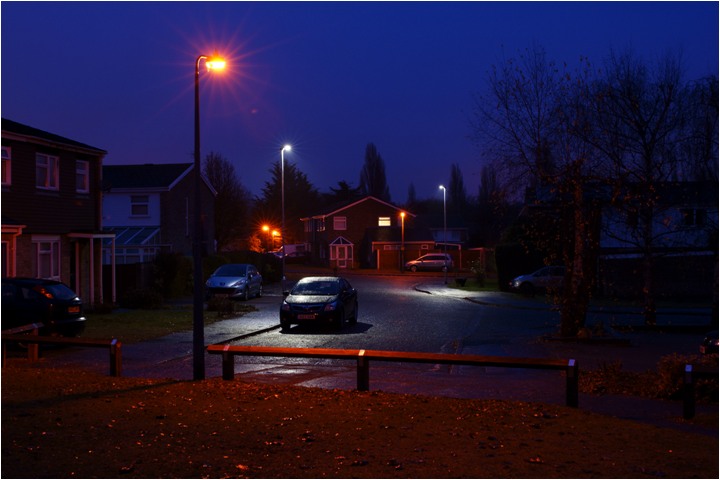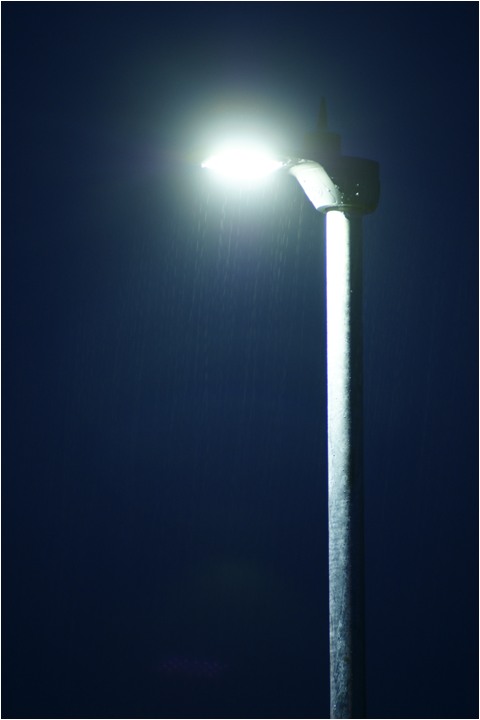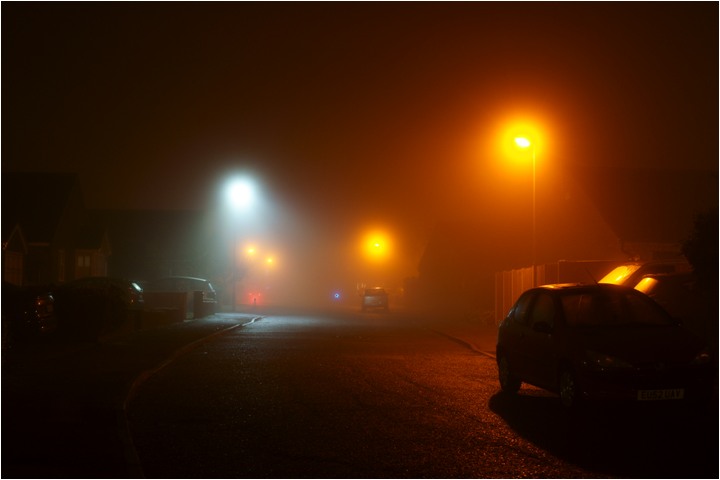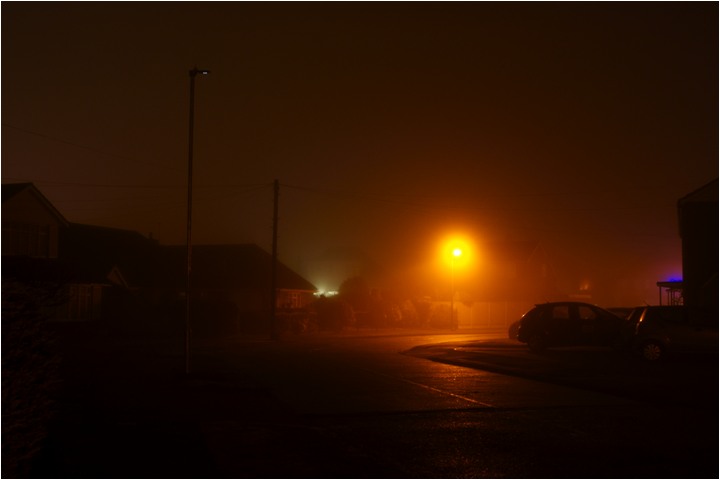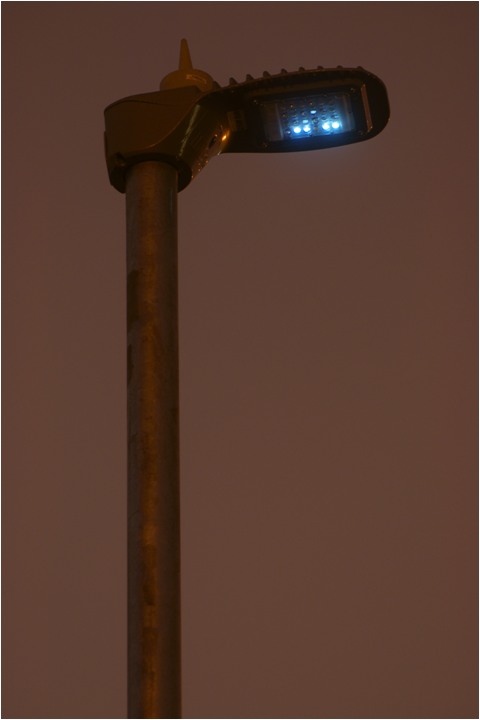P.S. I should say that the two "before" and "after" pictures from March 2015 were supplied at full resolution to my local newspaper to
illustrate a story the Colchester Gazette were running about the LED street lighting trial in Colchester, and this is how the photograph came to the attention of Essex County Council.
Meanwhile, a walk around Little Clacton (a village just outside Clacton in North East Essex) back in May this year puzzled me, as the lamps in practically every Parish Council controlled street light in some roads appeared to have unusually blackened ends:
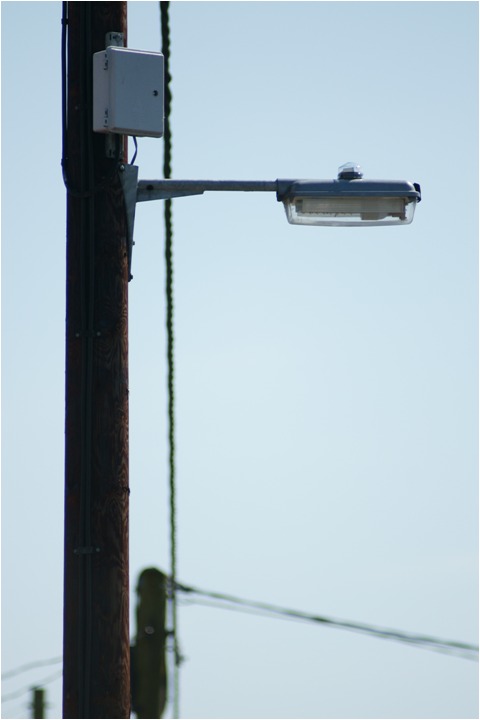
An example Thorn Beta 5 in Little Clacton, photographed in May 2016. The lamp in this lantern, and the lamps in all the other lanterns in Holland Road, appeared to have unusually blackened ends.
All photographs of Little Clacton in this post were taken in May 2016.
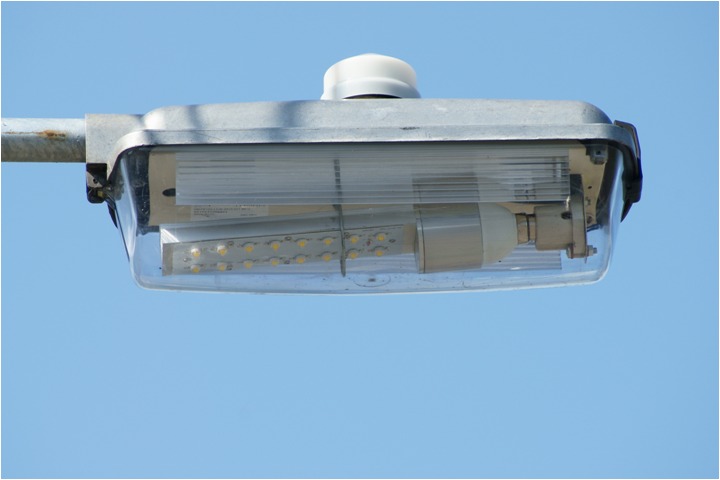
But a close-up photograph of another Beta 5, this time in Tan Lane, reveals that the original SOX lamp has been replaced with a LED lamp of similar dimensions.
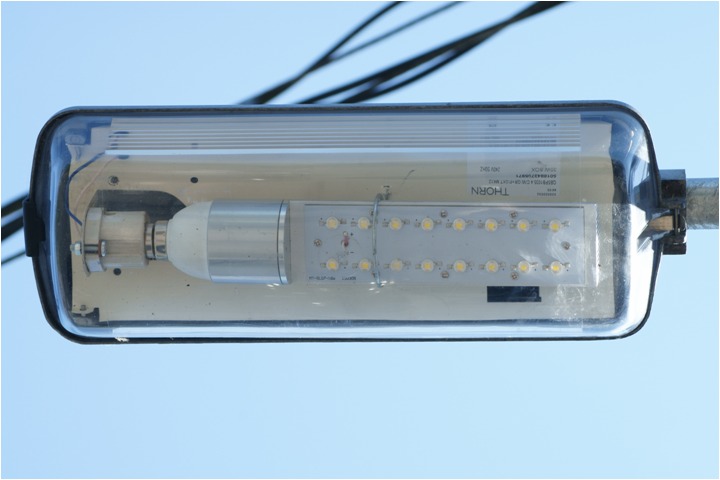
A view of the underside of yet another Beta 5, this time in Harwich Road. The label on the LED lamp reveals it is
a 4500K 16W "SL07" LED SOX-replacement lamp from Magnatech LED.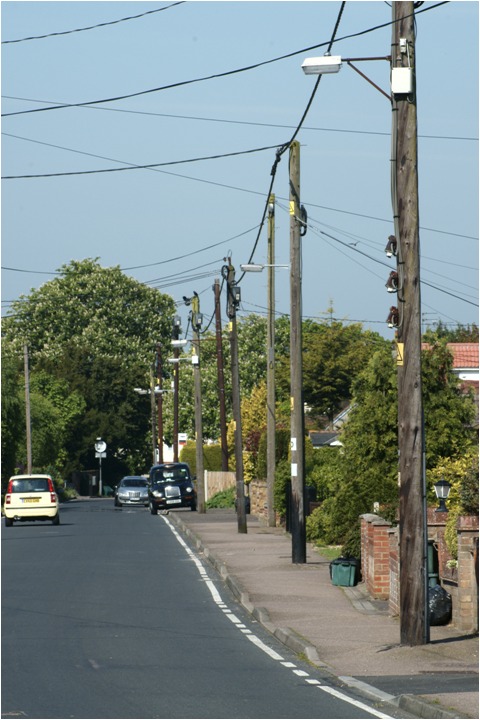
If my memory serves me correctly, Little Clacton's smaller roads like Holland Road, Tan Lane and Harwich Road were originally lit with GLS-running top-entry Phosco P100s affixed to brackets mounted on telegraph poles
(Simon Cornwell's Phosco P100). Although the lanterns may have changed, many of the brackets are still original.
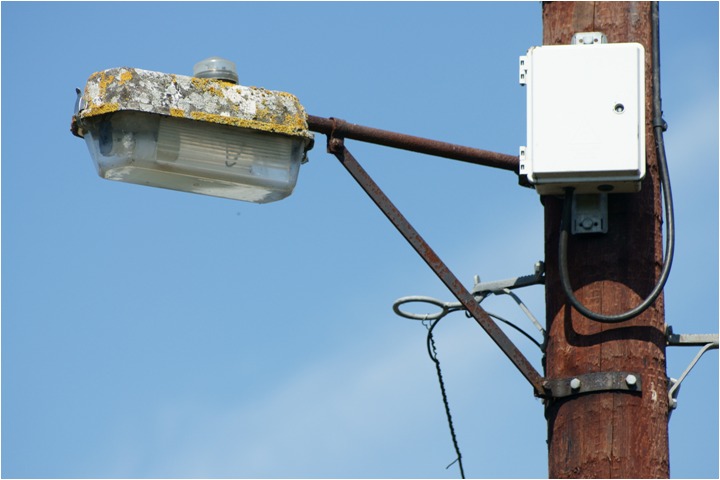
Compared to Essex County Council, I recall Little Clacton Parish Council took a little while longer to react to the energy crisis of the 1970s, but nonetheless the population of P100s were wiped out in the 1980s and replaced with (if my memory serves me right - and it is a test of memory!) a mix of Thorn Beta 5s, Eleco GR525s and Davis GR526s, like the one above.
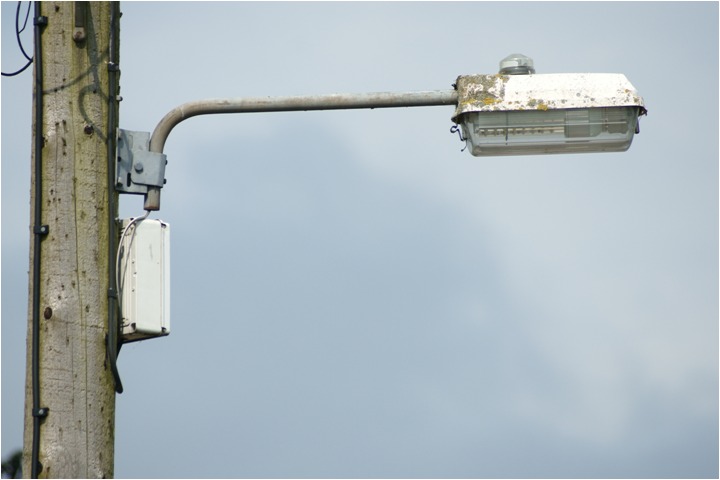
Casual replacements have continued over the years, seeing the appearance in greater numbers of the Philips MI26...
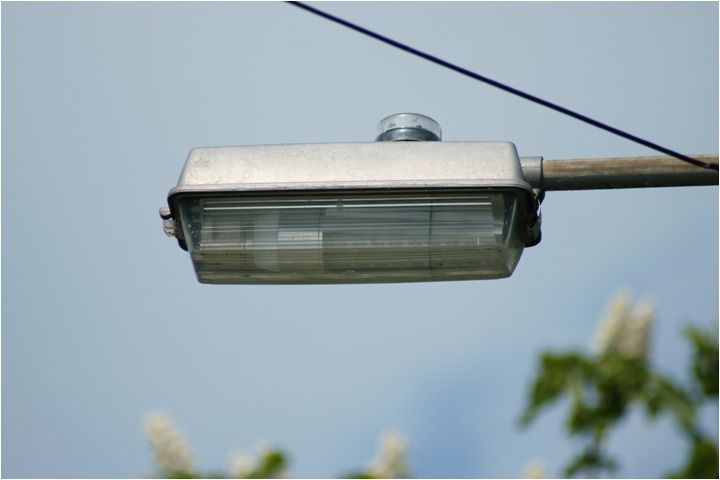
...and in lesser numbers the GEC Z9580.
All 35W SOX lanterns in the control of Little Clacton Parish Council, like the examples above, have now been converted to LED.
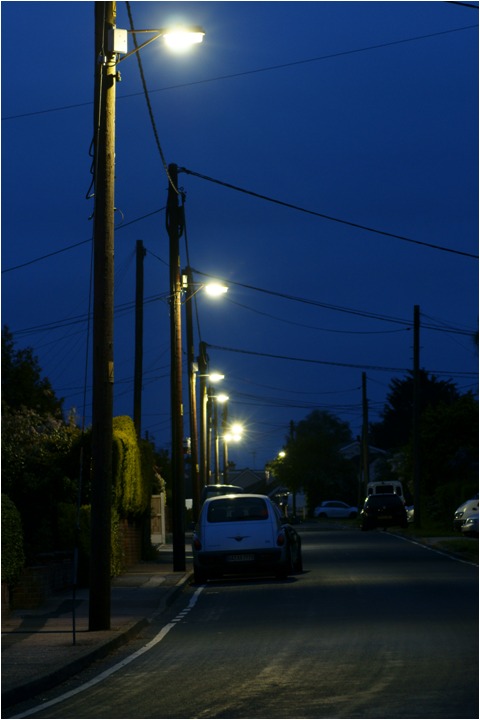
Here is the new 16W LED lighting in Holland Road in action. The road has returned to white light for the first time since the Phosco P100s were wiped out circa. 30-35 years ago.
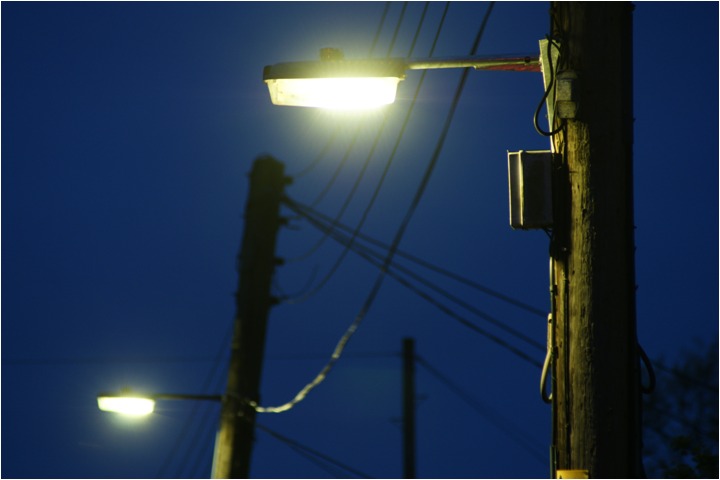
A close-up of two of the LED-converted Thorn Beta 5s at dusk.
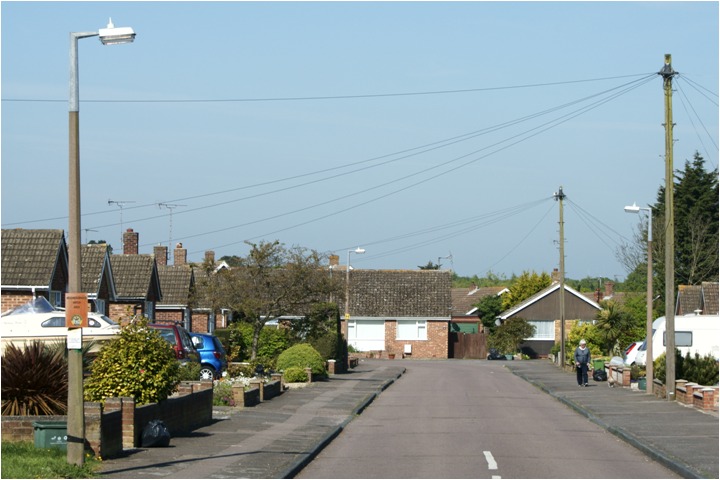 As with Weeley just up the road,
As with Weeley just up the road, Little Clacton has some housing estates where the lighting is under control of Essex County Council, and lit to their standards accordingly.
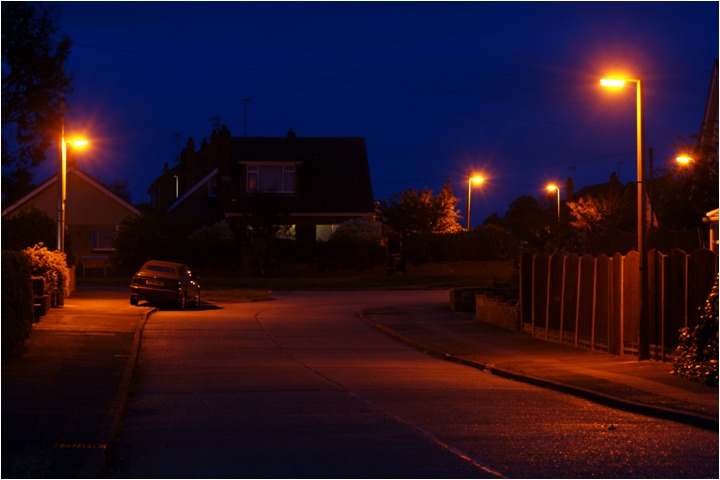
As far as I know, Essex County Council currently has no plans to change the vast majority of its street lighting (the lighting that is subject to its part-night lighting regime) to LED. Therefore some streets in Little Clacton will remain SOX for the forseeable future, and still switch off between 1am and 5am.
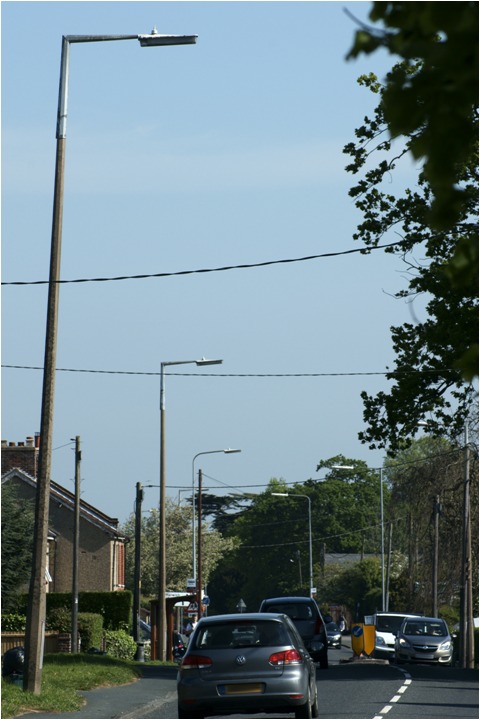
The B1441 through Little Clacton is also lit by Essex County Council.
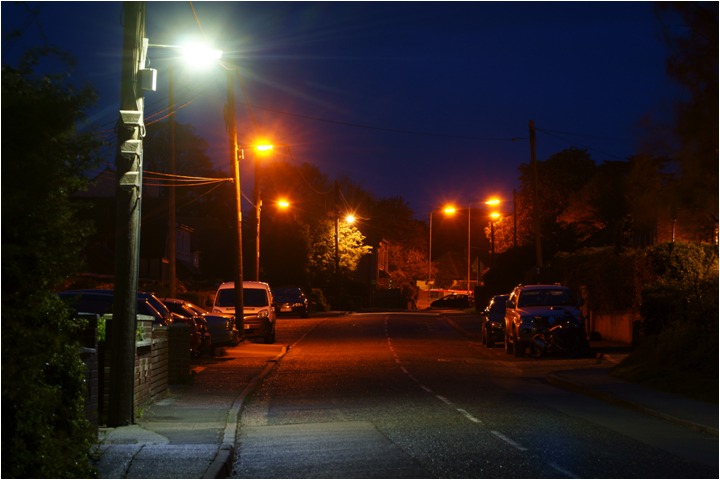
This is a "work in progress" photograph taken in St. Osyth Road in May 2016 before the LED conversions were completed. It shows that, despite the much lower wattage of the LED bulbs, the new bulbs are more than a match for the SOX bulbs they replaced.
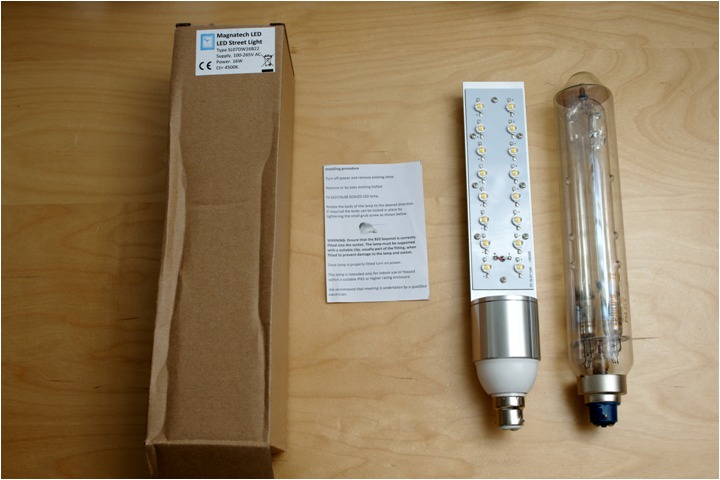
Having identified the bulb now being used in Little Clacton, and seeing what a good job it was doing,
I went and bought one. These photographs were taken in September 2016.
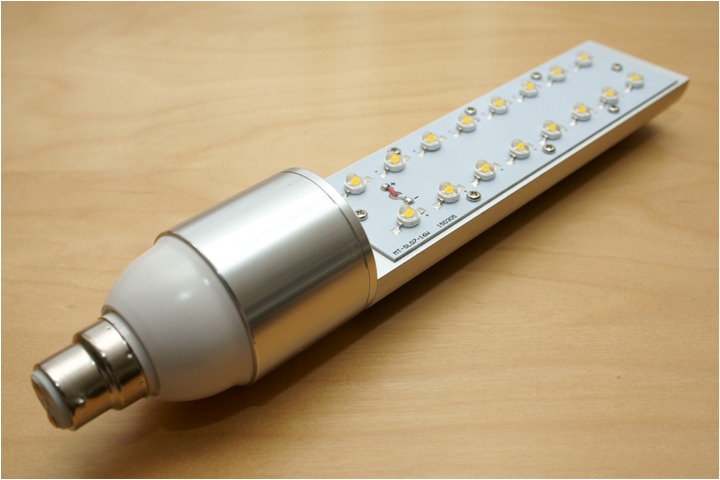
The 16W SL07 LED SOX-replacement bulb.
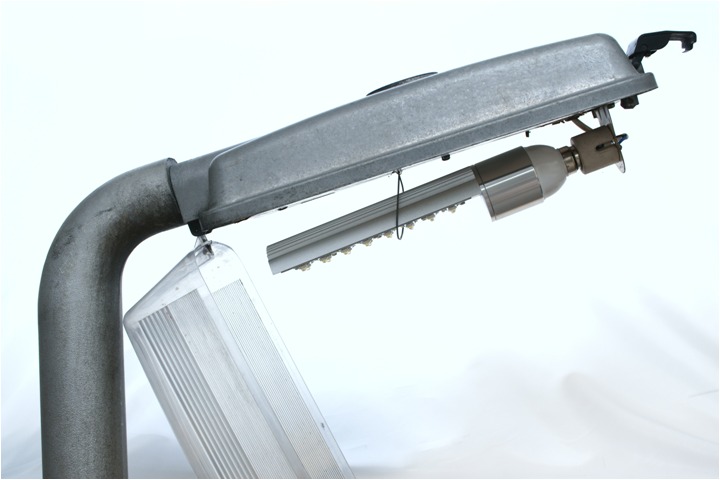
And here is how it looks close-up in a Thorn Beta 5
(Ebay purchase).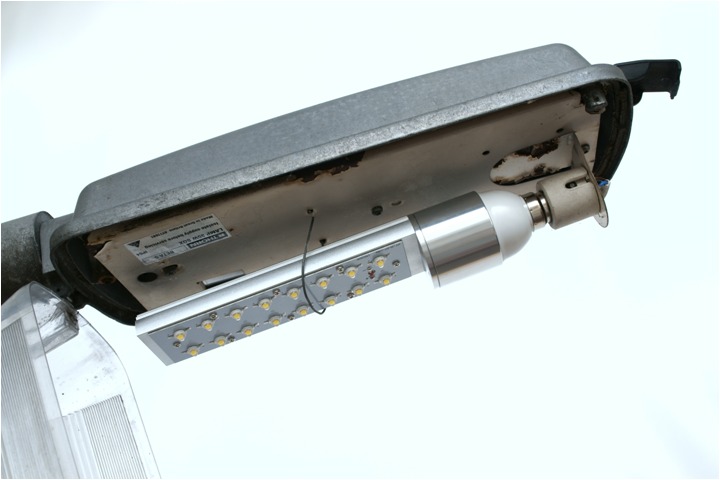
The only "improvement" I would make to this design, excellent though it is, would be to make a clear plastic hoop of the same diameter as the SOX bulb which would slide along the bulb to the wire loop that holds the lamp in place, take up the slack in the wire loop and level the bulb in the fitting.
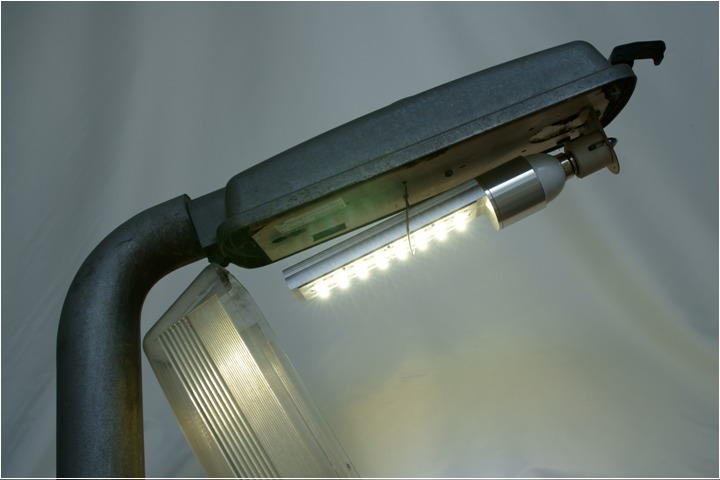
How the lamp looks in operation, once the control gear has been bypassed of course!
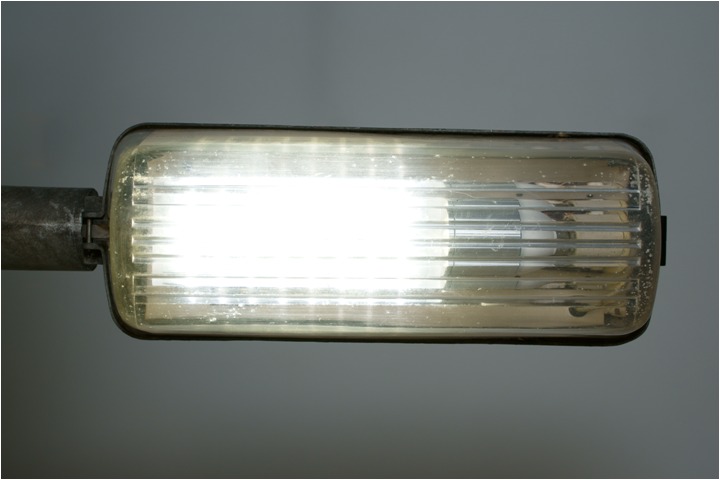
A view from the underside.
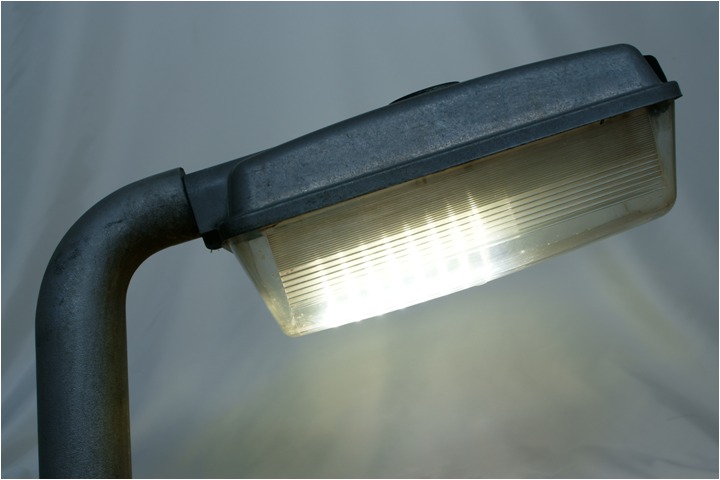
How the illuminated LED lamp looks inside a Thorn Beta 5.
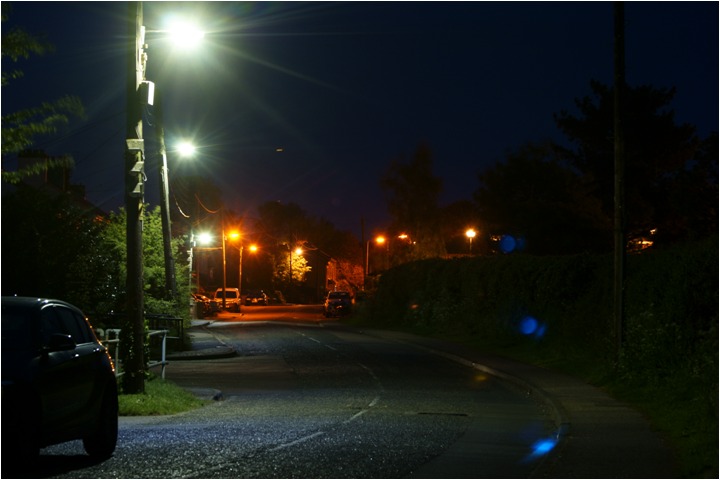
One last "work in progress" view of St Osyth Road from May 2016 showing the new LED installation and old SOX installation side by side.
It is great to see how a small Parish Council can be "light" years ahead of the big boys at Essex County Council!
In common with the nearby villages and seaside resorts in north east Essex, there are still a number of legacy MBF fittings in Little Clacton. So before they disappear for good, here are some that are still going. All these photographs were taken in May 2016.
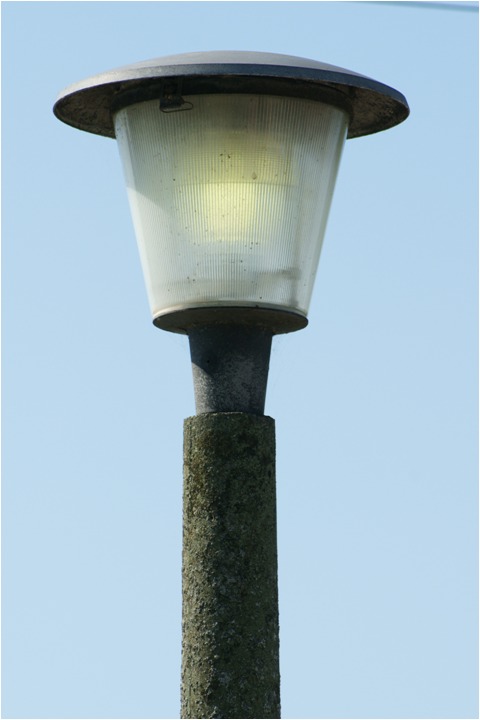
A day-burning GEC Z5671 on a Concrete Utilities "Utility Major" column in Harwich Road. This is likely to have been installed by the old Clacton Urban District Council. If I recall correctly, control of District Council street lighting was handed over to Essex County Council in 1974.
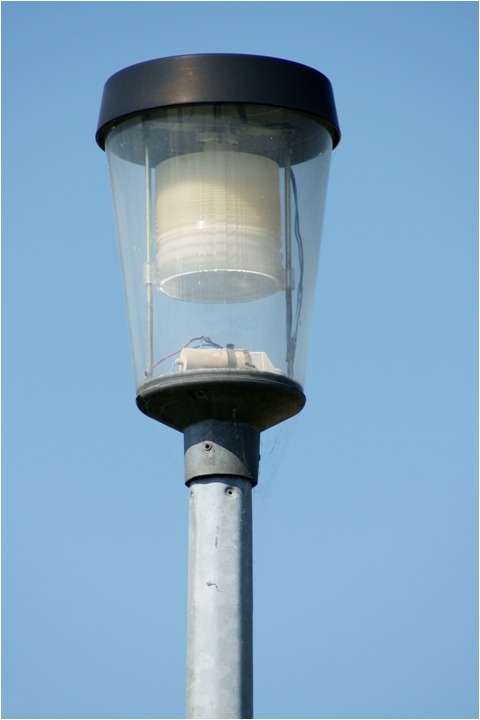
This one-off Phosco P107 casual replacement was for a knocked-down GEC Z5671 on a Concrete Utilities "Utility Major" column in Harwich Road.
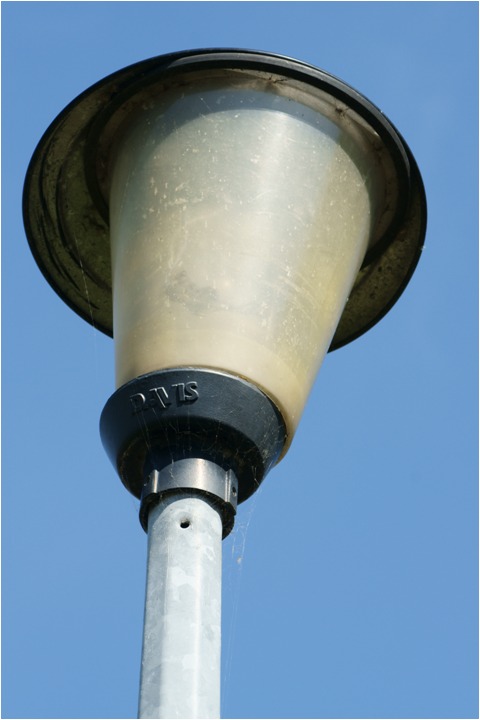
An off-balance Davis PT1179 casual replacement, also in Harwich Road.
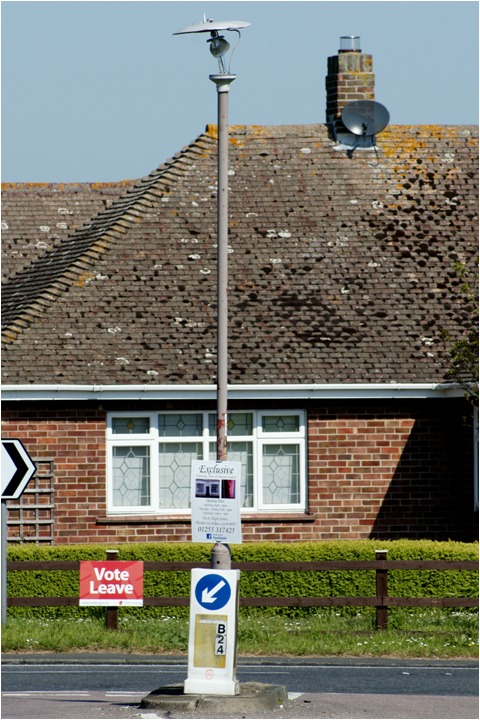
This Phosco P107 has stood on the traffic island at the junction of Harwich Road and Tan Lane for all of my living memory, but as of May 2016 it looked like this.
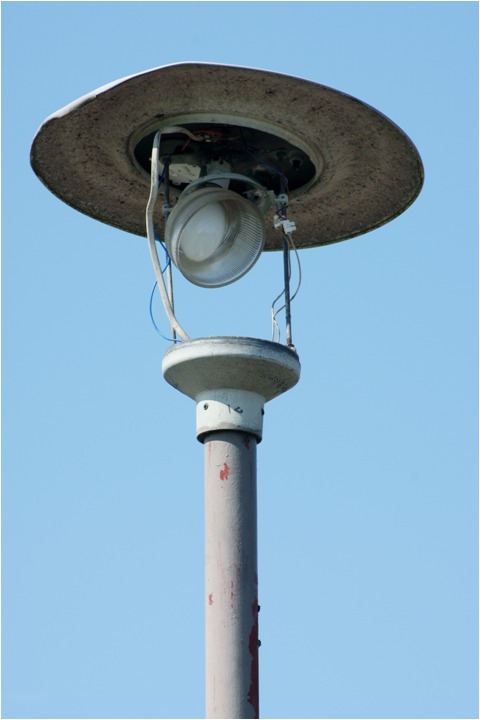
A close-up of the stricken lantern. As of August 2016, the column has been retained and a Phosco P567A installed as a replacement.
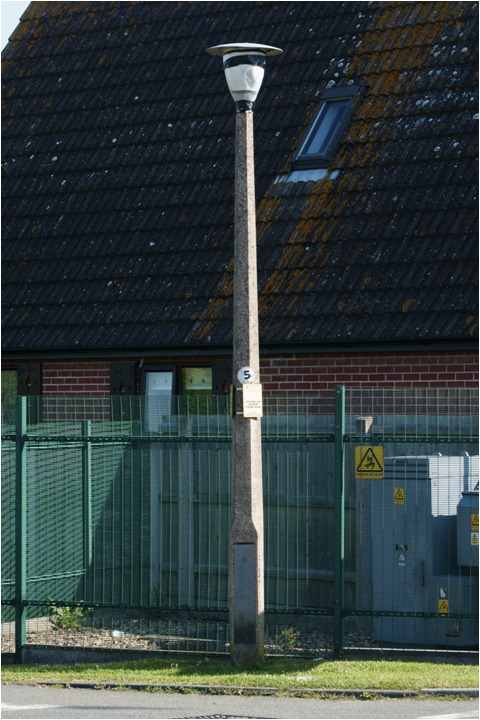
A privately-owned Eleco HW828 near the junction of St. Osyth Road and London Road. The cone is broken, and the owner has covered the hole with plastic sheeting secured with electrical tape.
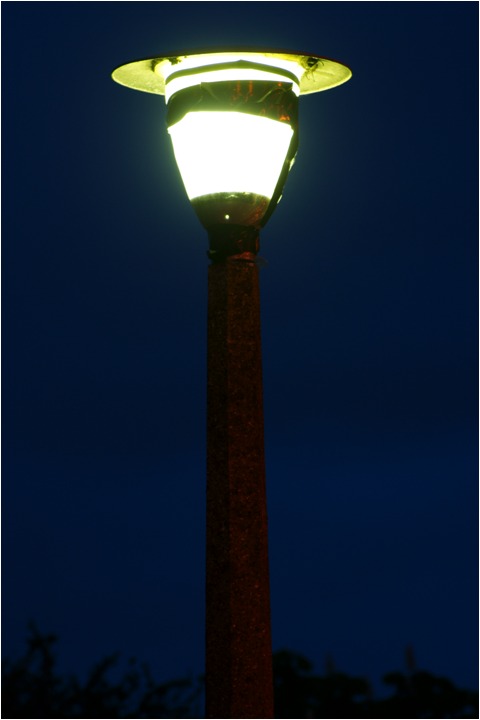
The damaged lantern is still in light, and produces the familiar mercury glow.




